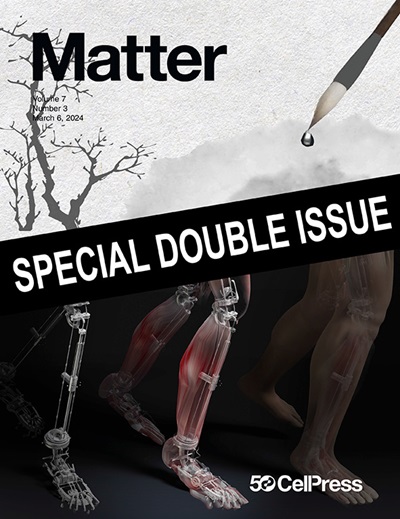A wearable transdermal device for on-demand drug delivery
IF 17.3
1区 材料科学
Q1 MATERIALS SCIENCE, MULTIDISCIPLINARY
引用次数: 0
Abstract
Microneedle (MN) patches have shown great potential in biomedical applications because of their minimal invasiveness and efficient drug delivery. However, challenges remain, such as restricted penetration depth, limited drug loading capacity, and the complexity of controlled release formulations. Here, we present a wearable transdermal device (WTD) system composed of a portable iontophoresis device with an electroresponsive hydrogel (electrogel) and polymeric MN patches. When activated by a programmed current of the WTD, the macroporous electrogel shrinks to control drug solution release and further transport into the skin via MN-generated microchannels, providing efficient, on-demand transdermal drug administration. In vivo experiments in a diabetic model demonstrated that the WTD system rescued mice from hyperglycemia or hypoglycemia by transdermally delivering insulin or glucagon, respectively. It enabled programmed delivery based on blood glucose levels to avoid multiple injections. Moreover, the WTD system could deliver high-dosing required chemo drug and effectively inhibited tumor growth in 4T1 tumor-bearing mice.


求助全文
约1分钟内获得全文
求助全文
来源期刊

Matter
MATERIALS SCIENCE, MULTIDISCIPLINARY-
CiteScore
26.30
自引率
2.60%
发文量
367
期刊介绍:
Matter, a monthly journal affiliated with Cell, spans the broad field of materials science from nano to macro levels,covering fundamentals to applications. Embracing groundbreaking technologies,it includes full-length research articles,reviews, perspectives,previews, opinions, personnel stories, and general editorial content.
Matter aims to be the primary resource for researchers in academia and industry, inspiring the next generation of materials scientists.
 求助内容:
求助内容: 应助结果提醒方式:
应助结果提醒方式:


